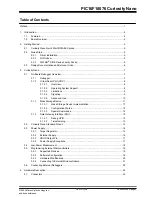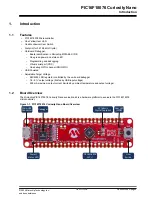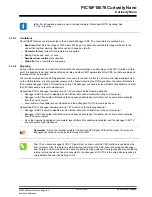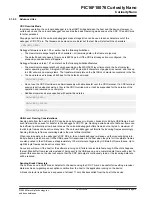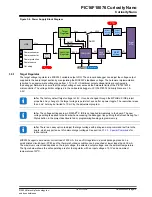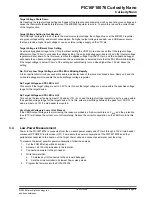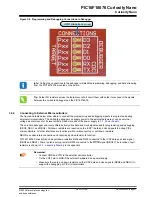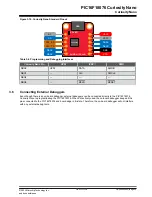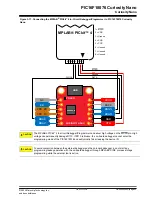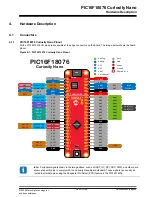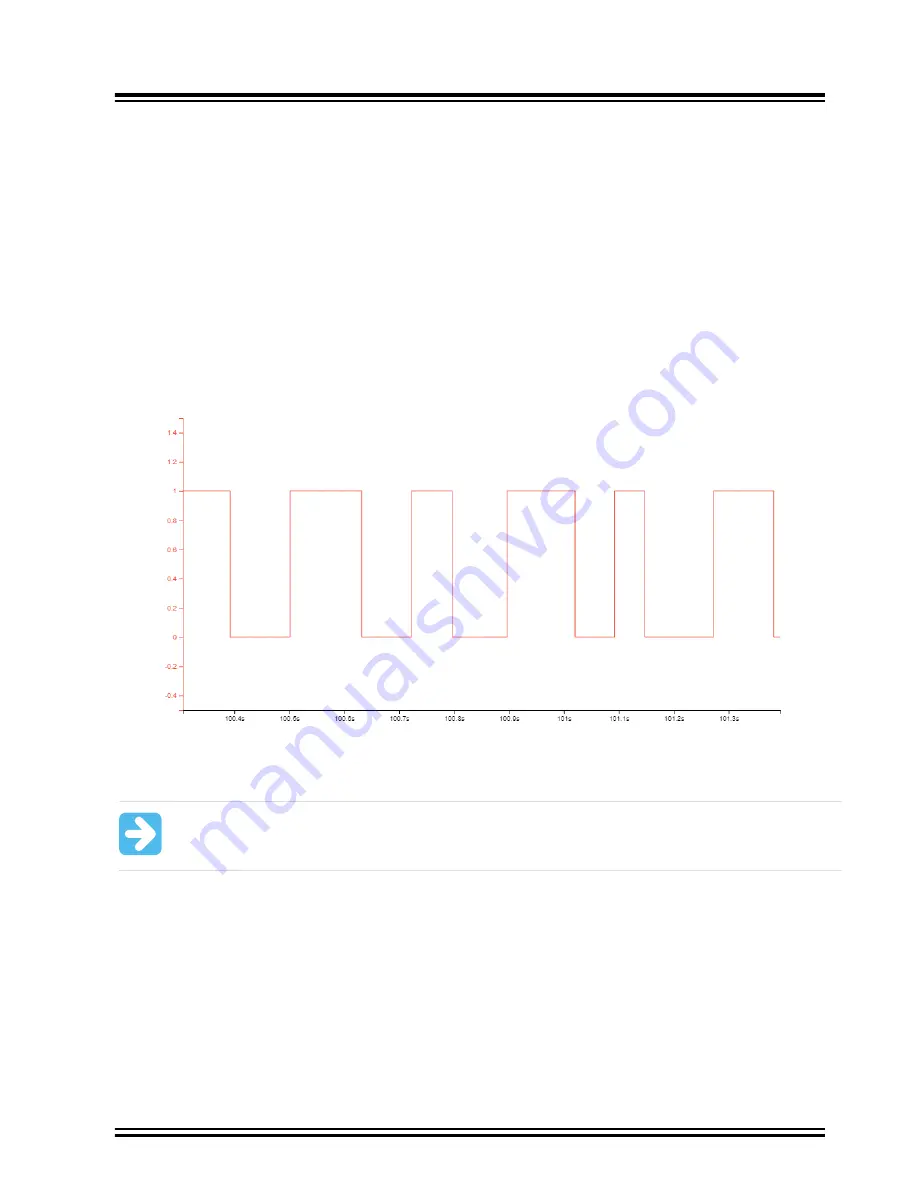
3.1.4
Data Gateway Interface (DGI)
Data Gateway Interface (DGI) is a USB interface for transporting raw and timestamped data between on-board
debuggers and host computer-based visualization tools.
MPLAB Data Visualizer
is used on the host computer to
display any debug GPIO data. It is available as a plug-in for MPLAB
®
X IDE or a stand-alone application that can be
used in parallel with MPLAB
®
X IDE.
Although DGI encompasses several physical data interfaces, the PIC16F18076 Curiosity Nano implementation
includes logic analyzer channels:
• One debug GPIO channel (also known as DGI GPIO)
3.1.4.1
Debug GPIO
Debug GPIO channels are timestamped digital signal lines connecting the target application to a host computer
visualization application. They are typically used to plot low-frequency events on a time axis – for example, when
given Application state transitions occur.
The figure below shows the monitoring of the Digital state of a mechanical switch connected to a debug GPIO in
MPLAB Data Visualizer.
Figure 3-2. Monitoring Debug GPIO with MPLAB
®
Data Visualizer
Debug GPIO channels are timestamped, so the resolution of DGI GPIO events is determined by the resolution of the
DGI Timestamp module.
Important:
Although signal bursts of higher frequency can be captured, the frequency range of signals
for which debug GPIO can be used is up to about 2 kHz. Attempting to capture signals above this
frequency will result in data saturation and overflow, which may cause the DGI session to be aborted.
3.1.4.2
Timestamping
DGI sources are timestamped when they are captured by the debugger. The timestamp counter implemented in the
Curiosity Nano debugger increments at a 2 MHz frequency, providing a timestamp resolution of a half microsecond.
3.2
Curiosity Nano Standard Pinout
The 12 edge connections closest to the USB connector on Curiosity Nano boards have a standardized pinout. The
program/debug pins have different functions depending on the target programming interface, as shown in the table
and figure below.
PIC16F18076 Curiosity Nano
Curiosity Nano
©
2022 Microchip Technology Inc.
and its subsidiaries
User Guide
DS50003399A-page 13


